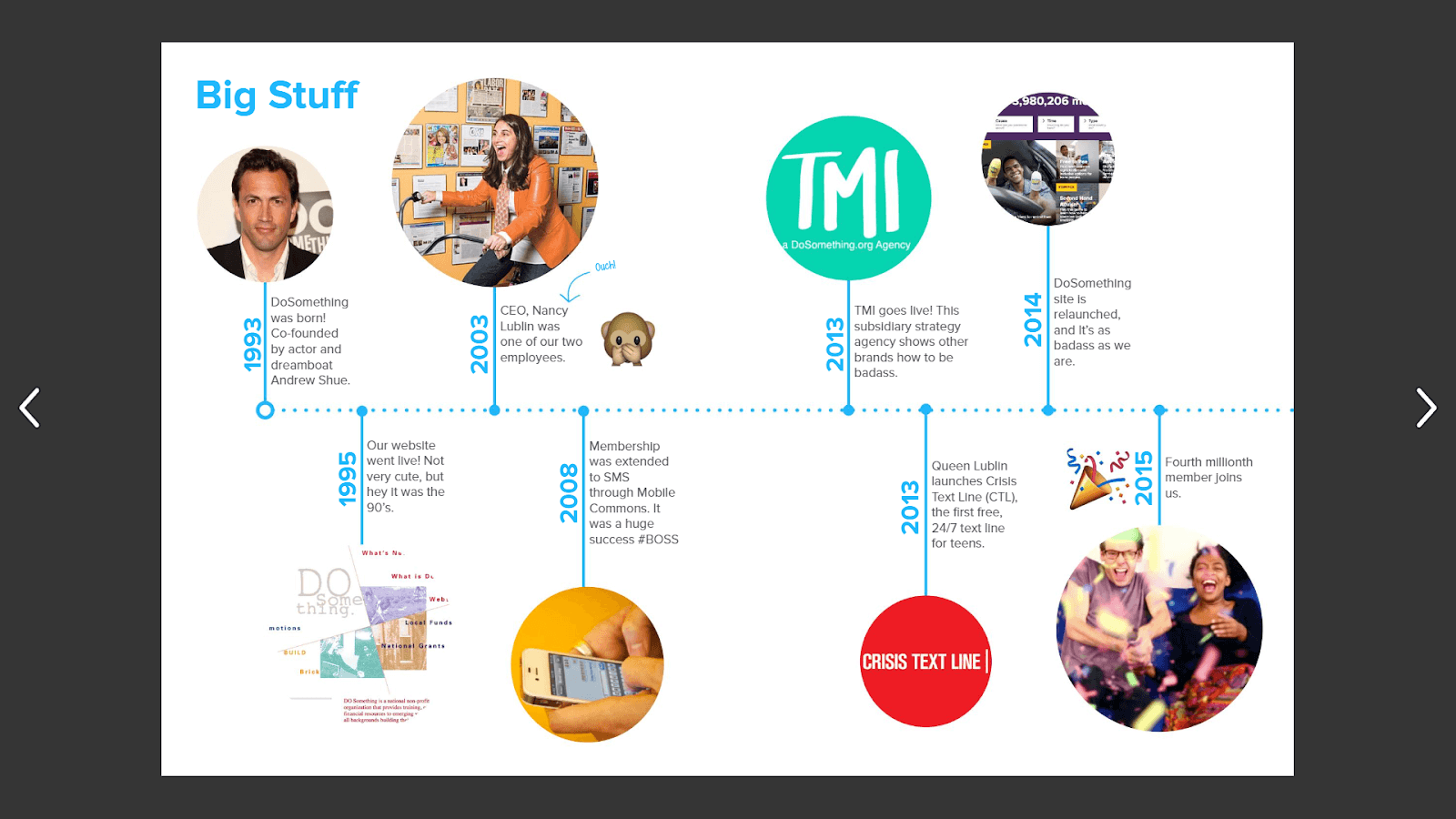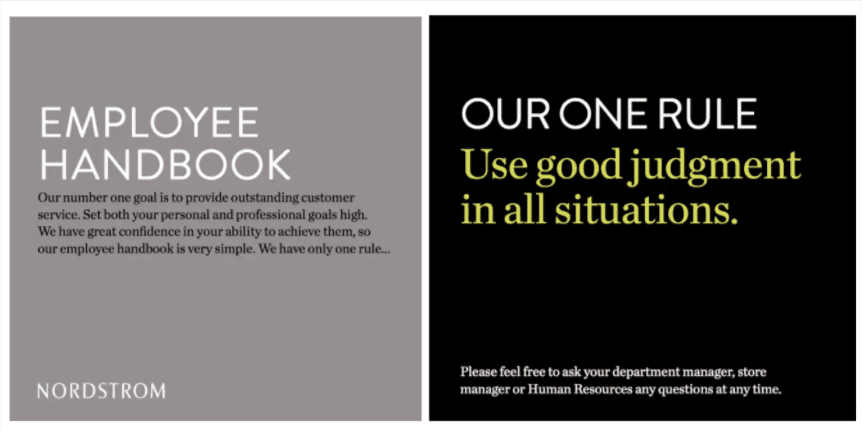In this day and age, more and more businesses realize that having a strong culture is often a deciding factor in attracting stellar talent and convincing current employees to stay with the company.
When you’re trying to stand out among many companies that are trying to attract employees with a similar set of benefits, strong company culture can be your only competitive advantage.
That’s why it’s crucial to have a strong, culture-first handbook (or culture book) that will tell your company’s story, explain what sets it apart and what it stands for.
In this article, we will teach you how to write a culture book that will represent your company, attract employees, and positively affect your reputation.
Let’s go!
What is the Difference Between a Handbook and a Culture Book?
So you’ve recently compiled a quality employee handbook, and you’re quite proud of it. But now, the whole corporate world is buzzing about culture books and the value they bring to the organization.
Have your efforts been in vain? Do you need to toss your handbook and start over with a culture-first handbook?
To give you an answer to these questions, let's first take a look at the key differences between these two documents.
The employee handbook has two main objectives.
First, to inform employees of their rights and convey expectations, policies, regulations, and rules of conduct. And second, to protect the business from any potential conflicts and litigation.

Source: Trainual
It is usually handed to the new hires on their first day because it contains procedures and regulations they need to get acquainted with, such as how to use company technology or how to behave in the workplace.
And while employee handbooks do usually contain sections about the company's culture, these sections are relatively short and not as much of a priority.
On the other hand, the culture book is entirely dedicated to the company's culture and is trying to capture the essence of what your company is all about.
Statements of the company's mission, vision, and values are at the heart of such a manual, often further enriched with stories of the company’s beginnings, where the company is headed in the future, and what sets it apart.

Source: Admind
While the employee handbook is more comprehensive and covers a wide range of policies and regulations, the culture book is more specific in nature. It details and explains the driving forces behind a company.
Now that we have defined what sets these two handbooks apart, we can easily answer the two questions from the beginning.
You should definitely keep the employee handbook because it’s still one of your most important documents for legally protecting your business and informing employees of their rights and obligations.
However, having a culture book in place could help you share your culture with your staff and create a work environment where employees want to go the extra mile for the employer.
In other words, if you pair your employee handbook and culture book and use them in tandem, you can create a more engaging workplace where everyone upholds the same core values.
Why Do You Need a Culture-First Handbook?
Culture books have only been around in the business world for a short while, but it seems like they’re here to stay.
There are many reasons why such handbooks are beneficial for your organization, but we’re going to keep it short and focus only on the most important ones.
Culture books are a great way to help those employees who find it difficult to read through the entire employee manual bridge the knowledge gap.

Source: Archbee.com
Making the handbook culture-centric is that spice that keeps the readers engaged and interested in its contents.
To illustrate this even further, let us look at the Disqus handbook, which is very culture-oriented.

Source: Disqus
The first part of this manual is dedicated to the company’s mission statement, history, milestones, and product overview. It also features engaging copywriting and photos of what life at the company is really like.
It does a great job getting new employees excited to work there, and prepares them for it by providing more practical information about how to work, who to ask for help, and how to handle work-life balance, which follows after.
Another valuable benefit of having a culture book is that it helps you assimilate new employees into your company’s culture.
It provides them with invaluable information about their new employer, and they can consult it whenever they’re unsure how to react or proceed in their work.
That’s why many companies like to build their culture books and company handbooks using documentation software, like Archbee.
It allows them to make this important knowledge easy to access and available at all times, since it can be published online and enriched with links, media, and other features that can help you get your point across with as little effort as possible.

Source: Archbee.com
In today's highly competitive business world, having a strong company culture is one of your most effective assets in acquiring new clients and customers, attracting stellar talent, and keeping current employees.
After all, employees consistently rank company culture as a crucial factor in choosing and sticking with an employer.

Source: Archbee.com
Therefore, having a strong culture and summing it up in the form of a book so you can share it with the world more easily does wonders for your company's reputation and hiring quality.
What to Include in Your Culture Book
Your culture book should reflect your company’s unique corporate identity, so its elements can be adapted or swapped out according to your needs.
However, there are several sections that culture books typically have, and the following list will show you what they are.
Your Origin Story
Whether it is a startup or it has been on the market for decades, every company has an exciting story to tell–the story of how it all started.
How did the founders get the idea to start a company? What were the obstacles they needed to overcome to get where they are now? What was it like to work there at the beginning? What is the company like today?
If you want your backstory to draw a lot of attention among new and existing employees, these are the questions you should answer.
Employees tend to remember origin stories because they relate to them on a deeper, more personal level.
When they know more about the past, they can better comprehend the company's values and align with them in their everyday work.
A good origin story can also make the company seem more human, which will create an excellent first impression for the new employees when starting with the company.
Let’s take a look at the culture book made by IDEO, the global design company, for example. It features a historical perspective on the company, as well as illustrations of the founders.

Source: Ideo
By depicting the company’s journey so far in such a direct and personal way, the culture book helps employees better understand the environment they came to work in.
Another good way to present your origin story is in the form of a timeline, which is exactly what the platform DoSomething.org did.

Source: DoSomething.org
They created a kind of roadmap of their journey, making their origins understandable and easier to grasp.
To know where we are going, we should know where we came from. That is why it is crucial to share the story of your origins with your employees, as it helps them understand the company's present and foresee its future.
In short, everyone loves a good origin story. It shows employees at first glance how the company’s history shaped its business practices and how it affects the way things are done now.
Your Company Values
Every company boasts about prioritizing its core values in its business practices, but it seems that employees often don’t know what those values are.

Source: Archbee.com
That’s why it is vital to write them down in your culture book, so everyone can get acquainted with them and align them with their own personal ones.
But what exactly makes company values so important?
Company values are the cornerstone of its identity. They are the beliefs behind everything the company does, a driving force that guides the company in making decisions, and a philosophy that outlines what is essential for the company to function.
Some of the most common values that companies outline in their culture books are:
- Integrity
- Teamwork
- Fairness
- Honesty
- Accountability
- Diversity
The main problem with core values is that they are often just empty, nice-sounding words without proper meaning.
For example, one of your core values can be that you choose quality over quantity. However, if mass-produced cheap fake-leather shoes make up the bulk of the offer at your shoe shop, your company can’t be said to live by its own standards.
And that can seriously harm the morale and motivation of your employees because you’re showing them that your values ring hollow and that nobody should live by them.
To see how you can define your core values properly and embed them in your company's culture, let's look at Netflix.

Source: Netflix
Their straightforward slide presentation depicts the company’s nine core values to show what skills, behaviors, and traits are desirable and expected of the employee.
There is no beating around the bush here: they expect their workers to make wise decisions instead of being rash, listen well, learn rapidly and eagerly, take smart risks, etc.
While doing that, they are building a solid base for strong company culture. And that is what core values are all about.
Your Core Principles
Since we discussed company values in the last section, it might be a good idea to differentiate them from core principles before we move on.
While core values sum up the company’s overall philosophy, core principles refer to its way of doing things.
In other words, core principles permeate all company decisions and activities.
They elucidate how to run a company, and offer guidelines on how your employees should operate and behave while tackling their everyday challenges.
It’s a good practice to define those core principles early on, so they can serve as an example of optimal performance in the workplace.
For instance, you can state that the core principle that best represents your company in its daily operations is to avoid dwelling on mistakes but instead to find a solution and move on.
You can then incorporate this principle in your culture book and set it as your preferred way of doing things for everyone in your company.
This way, you are sending the message that mistakes are an inevitable part of life, but that they can be a valuable lesson, as long as they serve as a way to find a solution. Employees now have a rule they can act on in their daily work.
To illustrate this even better, here’s an example from Nordstrom. Their core principle can be summed up as one sentence: Use good judgment in all situations.

Source: Insid
This statement represents their core principle. The most valuable guideline they want to pass on to their employees is a way of thinking, from which they can derive everything else. And for any additional questions, they can ask the managers.
Remember, your core principles are where your uniqueness lies. They represent how you like to do things and how you expect your employees to conduct themselves.
Your Company Goals
When talking about company goals, we are actually referring to its mission and future objectives.
Together they define why your business exists and what it strives to be, which makes them invaluable in motivating and exciting employees to work together in achieving the company’s overarching goals.
A mission is usually a goal-oriented statement that explains the purpose of the company and what it aims to achieve.
For instance, Patreon has two missions.

Source: Patreon
Knowing a thing or two about the company and how it revolutionized the way artists and other creatives get paid, we can safely say that these missions are embedded in the company’s functioning and that Patreon is really living by its word.
When companies like Patreon are super clear about the big picture and why they do what they do, employees are more motivated to do their work because they know where the company is headed.
That is why it is essential to include mission statements in your culture book and get them out in the open.
It is also a good practice to incorporate tangible future objectives. For instance, you can talk about where you see your company in 5 or 10 years.
You can, for example, say that you plan for your clothing company to become financially independent in the next five years and the best player in the market in 10 years.
You do not have to be modest here—raise the bar so the employees can have a major goal in mind and set higher expectations for themselves.
Although it is good to have goals like that listed in your culture book, this is not applicable for every industry. Let’s take Facebook as an example.

Source: Facebook
Their goals are somewhat vague because they exist in a fast-changing tech environment where the future can’t be precisely predicted.
Facebook notes that, although they have a very good idea of where they want to be in 30 years, they take the liberty to go through their goals every six months to make the necessary industry-related changes.
So think about where you see your company in a couple of years. Once you have a good idea of where you want to go, don’t hesitate to share it in your company culture book.
Your Definition of Success
If you want your employees to understand the company’s culture, it is pivotal to define success.
That means having a clear set of parameters and expectations everyone at the company can use to measure their achievements and professional development. Once you’ve done that, your employees will know what it takes to achieve greatness and which direction to take to get there.
For instance, your tangible vision of success can be continually providing exceptional customer service or maintaining an engaged and satisfied workforce.
Once success is defined, it’s much easier to map out the road to achieving it.
And this is where your culture book comes into play. It can arm your employees with all the tools they’ll ever need to become successful within the parameters set by your company which will allow them to climb the ladder to the top.
A great example of a company doing exactly that is the game developer Valve. They have done away with traditional corporate hierarchy in favor of a more democratic workplace.
While that’s admirable, it can make it difficult for employees to understand how they can advance their careers at the company.

Source: Valve
To provide clarity, Valve explained that their definition of success is growth and skill development.
In other words, employees who are adamant about learning and becoming more skillful are deemed successful in the eyes of the company, while those who chase results while stagnating in their development aren’t.
Look at it from the perspective of a Valve employee. Would this definition of success help you stay engaged and motivated? Would it make you more likely to stay with the company?
If so, we can definitely say that Valve’s definition of success is a valid and important part of the company’s culture that helps them achieve their goals and keep their workers satisfied.
Therefore, as you can see, defining success isn’t really that straightforward and universal. The trick is to find a definition of success that helps propel your company forward and make sure it’s shared with and understood by every employee in your organization.
Before conclusion, here's a great read recommendation: 5 Tips for Creating an Awesome Culture Deck for Your Team
Conclusion
In this article, we talked about the basics of writing a culture book and described a couple of items that are commonly found within it.
There is no one-size-fits-all approach, but we hope that we’ve managed to spark some ideas on how you can craft your culture book in a way that will represent your company’s values, principles, and goals.
Remember, your company culture can be your most competitive tool for attracting new employees and keeping the old ones, so it is worth the effort to create a book that will tell the world who you are and what makes you unique.
FAQ
Frequently Asked Questions
An employee handbook lays out the rules of the road—your policies, procedures, benefits, rights and responsibilities—and protects the company by clarifying compliance and conduct. A culture book, by contrast, tells the story of who you are: your mission, vision, values, origin story, how decisions get made, and what it feels like to work there. Think of the handbook as the operating manual and the culture book as the company’s narrative and north star. You don’t choose one or the other—they work best together.



